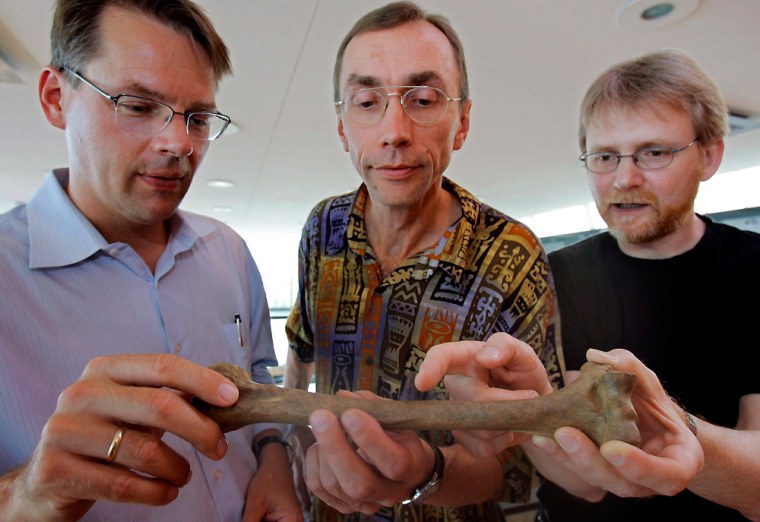U.S. and German scientists on Thursday launched a two-year project to decipher Neanderthals' genetic code, a feat that they hope will help deepen understanding of how modern humans' brains evolved.
Neanderthals were a species of the Homo genus who lived in Europe and western Asia from more than 200,000 years ago to as little as roughly 30,000 years ago.
Scientists from Germany's Max Planck Institute for Evolutionary Anthropology are teaming up with Branford, Connecticut-based 454 Life Sciences Corp. to map the Neanderthal genome, or DNA code.
"The Neanderthal is the closest relative to the modern human, and we believe that by sequencing the Neanderthal we can learn a lot," said Michael Egholm, the vice president of molecular biology at 454, which will use its high-speed sequencing technology in the project.
There are no firm answers yet about how humans picked up key traits such as walking upright and developing complex language. Neanderthals are believed to have been relatively sophisticated, but lacking in humans' higher reasoning functions.
The Neanderthal project follows scientists' achievement last year in deciphering the DNA of the chimpanzee, our closest living relative, which produced a long list of DNA differences with the chimp and some hints about which ones might be crucial.
The chimp genome "led to literally too many questions, there were 35 million differences between us and chimpanzees — that's too much to figure out," Jonathan Rothberg, 454's chairman, said in a telephone interview.
"By having Neanderthal, we'll really be able to home in on the small percentage of differences that gave us higher cognitive abilities," he said. "Neanderthal is going to open the box. It's not going to answer the question, but it's going to tell where to look to understand all of those higher cognitive functions."
Over two years, the scientists aim to reconstruct a draft of the 3 billion building blocks of the Neanderthal genome — working with fossil samples from several individuals.
They face the complication of working with 40,000-year-old samples, and of filtering out microbial DNA that contaminated them after death.
About 5 percent of the DNA in the samples is actually Neanderthal DNA, Egholm estimated, but he and Rothberg said pilot experiments had convinced them that the decoding was feasible.
At the Max Planck Institute, the project also involves Svante Paabo, who nine years ago participated in a pioneering, though smaller-scale, DNA test on a Neanderthal sample.
That study suggested that Neanderthals and humans split from a common ancestor a half-million years ago and backed the theory that Neanderthals were an evolutionary dead end.
The new project will help in understanding how characteristics unique to humans evolved and "will also identify those genetic changes that enabled modern humans to leave Africa and rapidly spread around the world," Paabo said in a statement Thursday.
